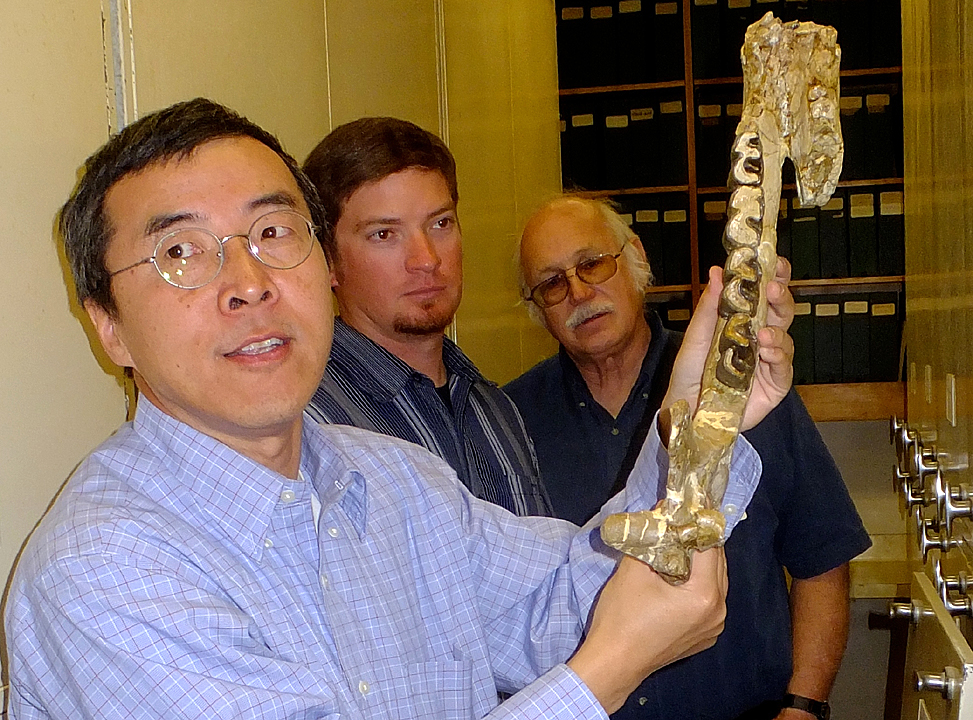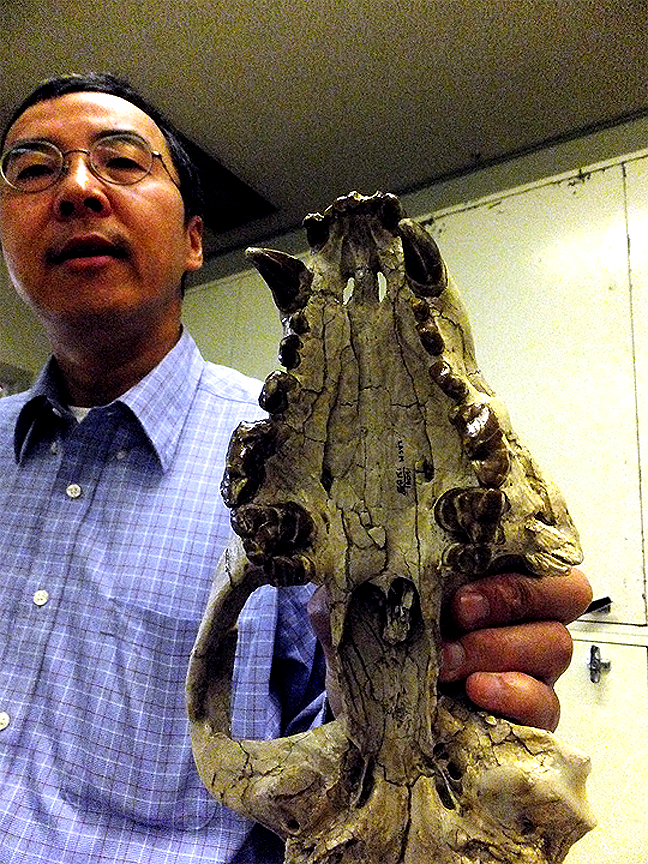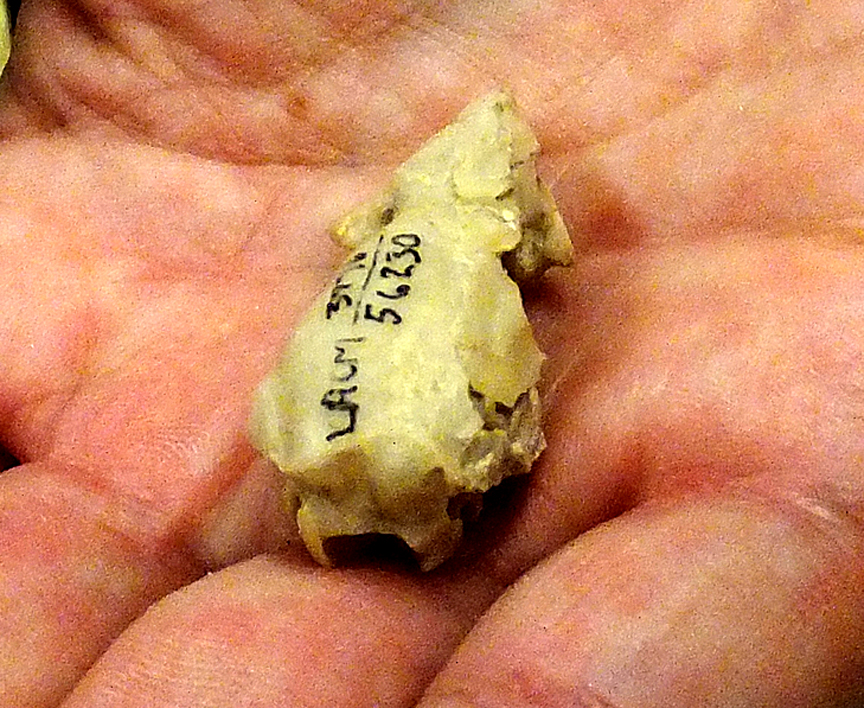|
Vertebrate paleontologist Dr. Xiaoming
Wang holds a skull from an extinct skunk called Martinogale
faulli (named in honor of long-time Red Rock Canyon State
Park ranger Mark Faull, who collected the mammalian remain in
1974)--from the Late Miocene Dove Spring Formation of the Ricardo
Group, El Paso Mountains, Kern County, California; specimen resides
in the collections of The Natural History Museum of Los Angeles
County. Photograph courtesy Bob Cates. I edited and processed
the image through photoshop.
Dated at 9 million years old, the fossil
represents the “earliest, most primitive, and smallest of
all North American skunks. In life, the animal would have measured
less than a foot long, including its tail, and weiged just a
few ounces.” Quotes from Dr. Xiaoming Wang.
|


